 |
|

|
This page explores Polish culture. Stay tuned as we'll be adding more content during the coming months.
Polish Castles
Most significant historical buildings in Poland |
Wycinanki ~~~~~~~~~~~~~~~~~~~~
Wycinanki (vee-chee-non-kee) is the Polish version
Wycinanki in Poland originated with sheepherders cutting designs out of tree bark and leather. Paper wycinanki dates from the early 19th century. Colorful wycinanki were pasted on furniture or roof beams as decoration, hung in windows, and given as gifts.
Wycinanki vary by region. For example, wycinanki created in the Kurpie region are typically all one color, while wycinanki from the Lowicz region are multi-colored. Techniques include cutting, clipping, punching, tearing and carving of paper as well as nalepianki in which multiple layers are glued together. 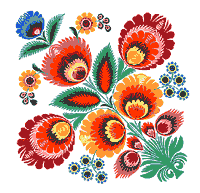 Subject matter includes peacocks, roosters and other birds, circular or star-shaped medallions (gwiazdy), flowers, and decorative scenes depicting particular yearly events such as Easter, Christmas, and so on. In some towns and villages competitions evolved to create the most beautiful wycinanki. Traditionally done as relaxation in rural areas of Poland, the techniques were passed down from generation to generation, with new themes and ideas developing as the paper cuttings became more detailed and intricate. Polish Wedding ~~~~~~~~~~~~~~~~ 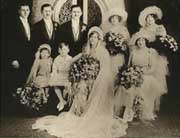 Marriage in old Poland was at a young age, and it was shameful when a person was of marriageable age and was not spoken for by the time Gromniczna (February 2) had rolled around. There were many ways for parents in the different areas of Poland to announce to the world that they had a daughter now considered old enough to be married. In the Krakow region, the homes were painted a sky blue color to indicate an eligible young lady lived therein. In other areas, one side of the house was dotted with whitewash, or dappled; others whitewashed the fence; in the Tatra mountains, a wreath was added to the front door of the home; in Kurpie, the front yard was decorated with sand arranged in flower patterns. The first part of the intricate courting and marriage customs is called 'Wywiady' or 'Zamowiny' the inquiry and proposal. Initiated by the young man who wished to be married, this custom indicated to him whether or not a certain young lady welcomed his intentions. All such endeavors were undertaken by the village/town intermediary, similar to the yentls of the Jewish community. Wishing to spare himself any embarrassment, the young man would ask the family Babcia or a village wise woman called a swata orstaroscina to conduct the initial step. If the swata felt that the young woman involved, and of course her family, would welcome the attentions of the young man, she would pass on the information to the intermediary. If not, she would make her inquiries elsewhere. The intermediary was usually an older man in the community, someone who was a respected elder, and who would be expected to negotiate with the prospective groom's best interests at heart. He was normaly the starosta or swat, it was his responsibility to see that all details of the courting, engagement, and handfasting went without a flaw, right down to the bedding down of the newly joined couple. In the old times, the swat was also a holy man, who co-performed the actual handfasting with the swata. Nighttime was a very popular time for the pair to approach the prospective bride and her family. It is an old belief that, when something good or fortuitous takes place in your life, to not speak it aloud, for fear the spirits would become jealous and undertake to reverse your fortune. The darkness of evening provided privacy then not only from the gossiping tongues of neighbors, but also from the retribution of prank playing elves and faeries. The swat and the prospective suitor knocked on the window of the intended's house. After being allowed into the house, they bowed to the parents, asked about everyone's health, and then made very indirect and discreet inquiries. While he talked, he brought forth a bottle of vodka called " gesiorka" that was made for just this special occasion. The bottle itself was topped with flowers, and a red ribbon was tied around the neck of the bottle. He would put the bottle on the table, and ask the young lady to fetch him a glass. If the girl left the room and never returned, or if the family did not accept the bottle of gesiorka, the visit ended and the young suitor left, knowing that his attentions were not welcome. If the vodka was accepted by the family, arrangements were then made for the young man and the swat to return and further discuss the details of the possible engagement. The suitor and the swat would then return several days later, once again proffering the bottle of gesiorka. All persons present would then sit down to a dinner . If an agreement had been reached and the young lady accepted the proposal, she would then pour herself a glass of gesiorka, take a sip from it, and then offer it to her intended, who sipped from it as well. Without this sharing of drink from the common cup there was no agreement and no engagement. If however after all the discussions and negotiations, it was decided that the young lady did not wish to join with this young man, he and the swat would be served either a dark soup, such as czarnina, or be offered arbuz, (watermelon) [the Polish word for watermelon having two meanings: watermelon, and to meet with refusal]. The wywiady was as binding as a marriage, and breaking one off was a very rare occurrence. To break off after declaring oneself was seen as shame and disgrace. Truth was held sacred, a pledge was your bond and you were honour bound to uphold it. The evening before the actual handfasting was one rife with customs in Polish tradition. Called dziewczyny wieczor, the maiden evening, the future bride and her bridesmaids gathered to decorate the house, make boutonnieres of rosemary for the groom's kin, and cook for the wedding feast. However, the most important reason for the gathering was so the bridesmaids, kin, and friends could say goodbye to the young lady as this was the last night that she was a single woman, and to help her prepare her final wianek or head wreath and for making the rozga weselna the wedding branch. A white table cloth was laid on the table at the bride's home, and the bride brought rosemary, myrtle and rue from the garden. All the girls took part in weaving this wreath; as it was the last time in her life the girl would wear this mark of the single life, great care and much spirit was put into the work. The elder women, led by the swata, then began baking the wedding breads the kolacz. These breads are used as we use wedding cake and no wedding is ever held without them. There are many baked so that all may share in the good fortune of the couple, generaly as the wedding party leaves for home after the celebration, bread is passed out to the people on the streetl. Circular in shape they were ornamented with small clumps of dough formed into roosters, chickens, hearts, and greenery. Two branches were made of dough and placed upright on the bread, symbols not only of the couple but also of fertility. Once these breads were placed in the oven to bake, the bridesmaids concentrated on the fashioning of the rozga weselna. It was the job of the bridesmaids to got out and cut a juniper branch for the rozga. The maid of honour and the bridesmaids took it to the groom's house and presented it to him and his kin and groomsmen. All helped trim it down so that two branches extended from the main body of the branch. It was decorated with apples, nuts, flowers, and all sorts of ribbons. One side was designated as the bride's side, and it was tied with blue ribbons purchased by the groom. The other side was the groom's, and it was tied with red ribbons purchased by the bride. Two candles were then fastened to each side. When the branch was decorated, everyone returned to the bride's house, where the candles were lit on the branches to indicate the arrival of the groom for his bride. As he entered the house, the parents of the bride led him to a table, which was covered with a white cloth, where a loaf of bread sat in each corner, and a bowl of salt adorned the middle of the table. He was offered a drink and given bread and salt as a wish that he and his partner never want for food and were ever protected from harm. The swat then went into the other room and escorted the girls out to begin the rozpleciny, or unbraiding ceremony. The mark of an unmarried woman in most of Europe were the long braids she wore in her hair, and the wreath she wore on her head for special occasions. Now was the time to abandon her childhood, for the sight of her with long flowing hair signalled to all her transition, and the unbraiding ceremony solemnly marked this change in her life. The groom and his kin stood in a straight line facing the bride and her attendants. The swat took the rozga from the groom, and handed it to the bride, a symbol of her partner-to-be. She then turned and passed it to her bridesmaids so they could start unfastening the ribbons tied thereon for the bride's hair. The bride was then seated on a doughbox covered with a sheepskin, the newly-made wreath was removed from her head by the swata, placed over top of the rozga, and the unbraiding ceremony began. Usually her hair was unbraided by her brother or a male relative; in a pinch, the swat stepped in to do the work. Many tears were shed over this symbolic loss of carefree days, both by the bride and by her family and friends. Once completed, the guests returned to their homes to get a well needed rest before the festivities of the next day. When the groom arrived the next day with the swat, his groomsmen, and kin, the swata and the bridesmaids began helping the bride to dress. She was seated on a stool so that her attendants could fasten into her hair the ribbons they had removed the day before from the rozga. A bouquet of rosemary, myrtle and rue was handed to the young woman, and she in turn removed a piece of rosemary to pin to the shirt of her groom. Prior to leaving for the place where the handfast was to be held, the bride and groom both bowed low to their parents, thanked them for their upbringing and "the bread they had been given", and were bestowed with blessings. Should either partner have a deceased parent, it was absolutely vital that the handfasting party stop at the cemetery on the way to the rite. Here a small meal was offered to the departed parent, and the news that a wedding was to take place was announced so that their spirit may join in the blessing and ceremony. The procession of celebrants then left for the ceremony. Along the way the bride and her attendants showered the onlookers with hops or oats in some areas, so that they may share in the good fortune the couple now had. In the most ancient times, the handfasting was called zmowiny, or agreement; it was later referred to as slubiny, a word that now means marriage. In places where the handfast is still practiced in Christian Poland, it is called merely zareczyny, or engagement, it's a period of time between stating of intent and a church wedding. Usually held in a grove or clearing, those invited made a circle around the couple, with each honor attendant standing by the couple's sides. A loaf of bread adorned the altar, flanked by two candles. The candles were lit, one by the bride and one by the groom. The swat and the swata joined the hands of the couple above the bread, and tied them with a white scarf . He then cut two large pieces of the bread for them to eat, dipping them into salt first. Wine then was shared, in the same fashion as the gesiorka had been, the bride drinking first, then offering the cup to her groom. When they had drunk, the wine was then spilled onto the ground, to be returned to the earth that had blessed them with one another, that she may share in the rite. Then the swat and swata held their hands over the couples's tied hands, and asked for the blessings of the spirits and ancient ones upon the union. The attendees then came forward and one by one put their hands over the couples' and offered their own blessings. When the last guest had done so, the swat and swata untied the scarf, held their hands above the couples' heads, and blessed them, asking them to honor their pledge to one another and to the universe, and pronounced them joined. No longer a single woman, the bride was then handed over to the women of the village, who conducted the oczepiny, or capping ceremony. The cap was hand crafted and embroidered by the family Babci, or if the family had none, by the swata, for the bride. She was once again seated, and the women gathered around her, removing the ribbons from her hair. In some areas at this moment the groom and/or the bride's male family members would then cut her long hair. The cap was then fitted to her head, and she was pronounced a member of the circle of women. In current times this custom comes with much laughter and joking as the bride fights to avoid being capped. After the wedding feast which could last for few days, the couple was escorted to their new home amidst much laughter and bawdiness by the wedding guests. The swata and swat would enter the new home first, followed by the attendants and the family members, just to make sure that all was in order for the couple's first night together. The bed was jumped upon, the pillows fluffed, and all this was accompanied by hoots and catcalls from the remainder of the party outside the windows. Once the joking was over, the swat and swata hurried everyone out of the house and locked the doors so that the pair could spend time alone together. After a designated time together in which the couple spent their time settling in to their partnership, they would make the final ritual of the handfasting. The bride would present herself to the other wives of the village, and be formally accepted into the circle of women. Polkas are not popular in the old country
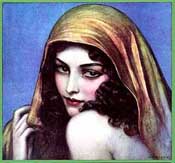 [W. T. Benda] One of America's Greatest Illustrators Born in Poznan Similar to developments on the press market, the electronic media also underwent a revolution of its own in the 1990s. However, unlike on the press market, the public media, radio and television, have retained a very strong position in Poland. Of the four radio and television station with the largest share of the market, each has two public media programs. The radio as a mass medium still enjoys great popularity among Poles. According to an opinion poll carried out by Demoskop in May 2002, almost all Poles, 99% in fact!, listen to the radio. As many as 69% listen to the radio everyday, of which 43% said they listened at least three hours a day.
Radio listeners can be divided into various groups, including those with more conservative tastes usually from the older generations, with Polish Radio One (PR1) mainly addressed to meet their listening needs. Many of the programs on PR1 today have been on its waves for many years and still have a huge audience, as is the case with 'Sygna*y dnia' (Daily signals), with which many Poles start the day. Another program - 'Lato z radiem' (Summer with the radio), which is broadcast until noon during the summer months, is listened to by whole families. In communist times, the polka, the radio jingle used for the program, could be heard on many a seaside beach transistor radio. The program also, it seems, has a strong fan-base in capitalist Poland. |
Folk Costumes ~~~~~~~~~~~~~~~~~
Folk Costumes Pictorial [Click Here] See Traditional Folk Costumes [Click Here] Echoes of Poland - Toledo [Click Here] Polish pisanka is a common name for an egg ornamented using various techniques. Originating as a pagan tradition, pisanki were absorbed by Christianity to become the traditional Easter egg. Pisanki now symbolize the revival of nature and the hope that Christians gain from faith in the resurrection of Jesus. There are various types of pisanki, based on the technique and preparation used: Kraszanki (sometimes called malowanki or byczki) are made by boiling an egg in a decoction of plants or other natural products. The color of kraszanka depends on the kind of product used:
black: oak or alder bark or the nutshell of walnut; golden: the bark of young apple tree or the marigold flower; violet: petals of the mallow flower; green: shoots of young rye or leaves of periwinkle; pink: the juice of beet.
Pisanki are created by drawing (Polish: pisanie) on an egg shell covered with a layer of molten wax, or alternately drawing designs with wax on a bare egg. The egg is then submerged into a dye.
Naklejanki or nalepianki, popular in Lowicz and the surrounding area, are decorated with petals of elderberry, scraps of colorful paper (including wycinanki) or with patches of cloth.
The number one, most popular type of hunting in Poland is - Mushroom Hunting. Some mushroom hunters often view it as a sport — one in which the mushrooms may actually have a chance of "winning" if the person eating does a poor job of species identification.
The tradition of picking and eating wild mushrooms is prominent in most Slavic countries. Whole families often venture into the nearest forest after a heavy rain during mushroom season, picking bucketfuls of mushrooms, which are cooked and eaten for dinner upon return or alternatively dried or marinated for later consumption.
The ability to identify, collect, and prepare edible mushrooms is passed down through generations. Methods can be different from those used elsewhere: the Slavic way does not require identification to species, but relies more on experience and familiarity with varieties that have been collected before. Many people would not consider eating a species that they cannot positively identify using a field guide, but most Slavic collectors would view this attitude as overly paranoid. Some mushroom species listed as poisonous in Western literature are even listed as edible in Slavic literature.
Some species have been shown to contain different amounts of toxins when growing in the New World. Additionally, the toxins of numerous mildly poisonous mushrooms can be broken down or eliminated with specific cooking or drying methods, and these are handed down together with collecting skills as part of the mushroom-consuming tradition.
Apart from showing the natural environment, Poland's tourist routes also present the country's cultural and historic sights: medieval castles, Baroque palaces, stately homes, places of worship for the various religions and denominations, open-air museums of folk culture, and mysterious prehistoric sites.
In northern Poland, there are castles that were built in the 13th and 14th centuries by the Teutonic Knights, the most famous being the "grand daddy" of fortresses in Europe called Malbork.
Jousting tournaments are held in summer at Bytów, Gniew, and Golub-Dobrzyn Castles. Fraternities of knights arrive from all over Europe. In their company you can step back in time for a while - to watch lance and axe duels, archery and crossbow competitions, attacks on the fortress with massive siege engines, and in the evenings sit with the knights around a campfire, take part in feasts, and watch performances of courtly dancing. Polish Castles on the Web
Lipa is the Polish name for the linden tree that blooms in midsummer, and Lipiec is the Polish name for the month of July. The linden tree has always held a place in the hearts of the Polish people. In folktales, the Blessed Mother hid among the linden's branches, and revealed herself to children. Many wayside shrines were placed under linden trees for this reason. Lightning was thought never to strike a linden tree, and thus it was a "lucky" tree. Sometime during the Middle Ages, a Prussian was pardoned by the ruling Teutonic Knights and thanked God by placing Mary's likeness in a local linden tree. Rumors of miraculous healing and epiphany soon attracted local pilgrims to the Holy Linden (Swieta Lipka). So many came to this tree, people built a shrine to the arbor in 1320. The knights razed the Catholic chapel and installed threatening gallows, complete with bodies, around these trees. However, the gallows eventually rotted and flocks of Germans and Poles still visited the Sanctuary of Our Lady. This Sanctuary is located near Mragowo in the Mazury region of Poland. Television in Poland~~~~~~~~~~~ Telewizja Polska Spólka Akcyjna (or TVP) is Poland's public television network broadcasting corporation. About a third of TVP's funding comes from the levying of a television license, most of the rest comes from broadcasting commercials. "TVP" started in 1937. 1939 - "TVP" destroyed by German army. October 1952 - first polish telecast after WWII. TVP broadcasts two general TV channels (TVP 1 and TVP 2), a network of regional channels (TVP 3) and one international channel TVP Polonia. A new cultural channel TVP Kultura started in 2005 and a new sport channel TVP Sport was launched in 2006. TVP 3, TVP Polonia, TVP Kultura are available free across Europe, however TVP 1 and TVP 2 are encrypted. The earliest monuments of Polish literature date to the Middle Ages. The first substantial books were created about the 11th century, when the first scriptoria were founded on Polish soil. The first recorded sentence in the Polish language reads: "day ut ia pobrusa, a ti poziwai" ("let me grind, and you take a rest") and was a paraphrase of the Latin "Sine, ut ego etiam molam". For a fairly comprehensive overview of Polish literature from the Middle Ages, Renaissance and the Age of Enlightenment to Present [Click Here] If you are interested in Polish science fiction and fantasy [Click Here] Three most famous Polish poets are known as the Three Bards: Adam Mickiewicz (1798-1855), Juliusz Slowacki (1809-1849) and Zygmunt Krasinski (1812-1859). There have been four Polish Nobel Prize laureates in literature: Henryk Sienkiewicz, Wladyslaw Reymont, Czeslaw Milosz, Wislawa Szymborska. The last two have been poets. More on Polish Poetry: [Click Here] Polish Language ~~~~~~~~~~~~~~~~ Polish has the second largest number of speakers among Slavic languages after Russian. The Polish language is the most widely spoken of the Slavic language subgroup of the Lechitic languages which include Kashubian (the only surviving dialect of the Pomeranian language) and the extinct Polabian language. These three languages, along with Upper and Lower Sorbian, Czech and Slovak, belong to the West branch of Slavic languages. "Standard" Polish is still spoken somewhat differently in different regions of the country, although the differences between these broad "dialects" are slight. 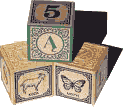 There is never any difficulty in mutual understanding, and non-native speakers are generally unable to distinguish among them easily. There is never any difficulty in mutual understanding, and non-native speakers are generally unable to distinguish among them easily.The regional differences correspond mainly to old tribal divisions from around a thousand years ago; the most significant of these in terms of numbers of speakers are Great Polish (spoken in the west), Lesser Polish (spoken in the south and southeast), Mazovian (Mazur) spoken throughout the central and eastern parts of the country, and Silesian spoken in the southwest. Mazovian shares some features with the Kashubian language. Though the Kashubian language can hardly be understood by Polish speakers unless written, until recently many Polish linguists considered it a dialect of Polish. 53,000 people in Poland declared that they mainly use Kashubian at home. A number of schools in Poland teach in Kashubian as a lecture language, and it is used as an official alternative language for local administration purposes in parts of the Pomeranian Voivodeship. The distinctive Góralski (highlander) dialect is spoken in the mountainous areas bordering the Czech and Slovak Republics. The Górale (highlanders) take great pride in their culture and the dialect. It has some cultural influences from the Vlach shepherds who migrated from Wallachia (southern Romania) in the 14th-17th centuries. The language of the coextensive East Slavic ethnic group, the Lemkos, which demonstrates significant lexical and grammatical commonality with the Góralski dialect, bears no significant Vlach or other Romanian influences. Esperanto the Universal Language ~~ Esperanto was developed in the late 1870s and early 1880s by ophthalmologist Dr. Ludovic Lazarus Zamenhof, a Polish Ashkenazi Jew. It is the most widely spoken constructed international auxiliary language and is employed in world travel, correspondence, cultural exchange, conventions, literature, language instruction, television (Internacia Televido) and radio broadcasting. Some state education systems offer elective courses in Esperanto; there is evidence that learning Esperanto is a useful preparation for later language learning. Poezja spiewana ~~~~~~~~~~~~~~~~ . . . meaning sung poetry in Polish is a broad and imprecise music genre, used mostly in Poland to describe songs consisting of a poem (most often a ballad) and music written specially for that text. The compositions usually feature a delicate melody and scarce musical background, often comprising only a guitar or piano. Some sung poetry performers are singer-songwriters, others use known, published poems, or collaborate with contemporary writers. Similar artists in other countries are usually classified as folk music or folk rock (such as Bob Dylan, Simon and Garfunkel, or Vladimir Vysotsky).
Polish Cinema ~~~~~~~~~~~~~~~~~~
Wooden remains of the huge fortified settlement from the eight century BC have been found in an excellent state of preservation, because of wetland wood protecting conditions. Biskupin has been called the "Polish Pompeii" as well. 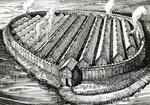 [Official Buskupin Website] |
Everything About Poland This link is really good to understand everything from typography to the economy. [Click Here]  Polish Email Pen Pals Make a new Polish friend 
 Typical Pisanki  FACTOID
FACTOIDPolish towns reflect the whole spectrum of European styles. Poland's eastern frontiers marked the boundary of the influences of Western architecture on the continent. Still today, you can see well-preserved Medieval, Gothic and Renaissance towns -- some renown as the most beautiful in Europe. FACTOID During any given month in a mid-sized town, you will have several opportunities to attend concerts or stage productions. As such, Poles treat these events as special occasions and dress elegantly when attending the theater or a concert.


  Malbork: Perhaps the most famous castle in Europe
|
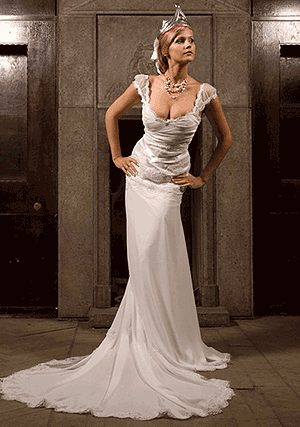


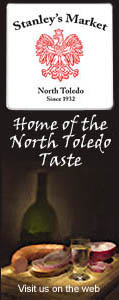
 Traditional folk garb differs region to region across Poland, but regardless of the territory, they are
all very colorful. Costumes are worn by all the Polish folk dance troops in Poland and Polonia. Instead of
expounding on the topic here, check out Miodusia's web pages in the link below. She does a very nice job
guiding you through several regions and her pages are embedded with some traditional folk melodies as well.
Traditional folk garb differs region to region across Poland, but regardless of the territory, they are
all very colorful. Costumes are worn by all the Polish folk dance troops in Poland and Polonia. Instead of
expounding on the topic here, check out Miodusia's web pages in the link below. She does a very nice job
guiding you through several regions and her pages are embedded with some traditional folk melodies as well. Edyta Sliwinska comes from a working-class Polish background and has made many sacrifices to pursue her
dream to become the world's greatest Latin dancer.
Edyta Sliwinska comes from a working-class Polish background and has made many sacrifices to pursue her
dream to become the world's greatest Latin dancer.

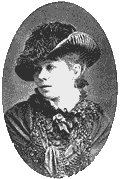 Maria Konopnicka
Maria Konopnicka

